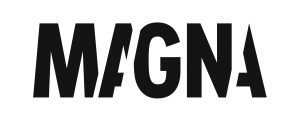Study Explores How Ad Optimization Accelerates Progression Through the Purchase Journey & Debunks Traditional Purchase Funnel
New York, NY – March 11, 2021 – Understanding consumer behavior and how best to appeal to consumers at each stage of the purchase journey has long been an industry focus in the media, technology and retail spaces. A new study by IPG Mediabrands’ agencies MAGNA and the IPG Media Lab reveals that serving the right creative at the right time based on that journey can more efficiently guide consumers through to purchase. “The Accelerated Purchase Journey: Efficiently Guiding Consumers Through to Purchase” also found that optimization drove more product purchases (+8%, versus +2% for unoptimized ad exposures).
Before purchasing a brand, a consumer must be in-market for the product, be aware of the brand and include that brand in their consideration set. After three optimized ad exposures, 14% of people were closer to purchase . Meanwhile, without optimization, where the same ads were delivered at random, there was no progression through the purchase journey at all.
The study explored the consumer behaviors and paths to purchase for two leading brands in the beauty and personal care spaces, specifically in foundation and shampoo. Qualifying consumers for the research fit each brand’s key audience demographic and were open to buying the product from category over the next six months. Consumers were randomized into a test cell: Control, Non-Optimized or Optimized. The optimized groups received pre-roll ads over the course of several weeks with the creative execution based on their position in the purchase journey. The non-optimized groups received the same ads over the same time period, but the creative execution was chosen at random, regardless of purchase journey position. The control group served as a clean baseline and received ads for non-competitive brands.
“The key to driving purchase is delivering content that feels relevant and provides useful information,” said Kara Manatt, SVP, Intelligence Solutions, MAGNA. “The difficulty is that what is relevant and useful varies from person to person depending on whether they’ve just started considering a purchase or whether they are ready to make a final brand choice. When we deliver ads that are customized to that journey, we are removing obstacles and accelerating the purchase journey.”
“This study proves that journey-informed content is a critical accelerator of customer flow, effectively moving customers from one step in their journey to the next, ultimately culminating in a purchase,” said Jonathan Rigby, Global Chief Strategy Officer, Reprise Digital. “Audience needs and motivations change at each stage of the purchase journey so the content we create, whether for paid or owned channels, must be fluid enough to create flow.”
Additional key findings of the study include:
- A plan beats no plan. When the creative execution is tailored to the individual’s position in the purchase journey, progression to purchase is accelerated. After just three exposures, +14% progressed closer to purchase, while there was no progression without optimization. At higher levels of frequency, after five ad exposures, an optimized plan drove more than 3 times as much progress through the funnel as an unoptimized plan (29% v. 9%).
- Consumers could feel the difference. Not only did the optimized ad delivery prove more effective for advertisers, but consumers also had better ad experiences. When optimized, the ads felt more enjoyable, relevant, and offered more information. In addition, optimization decreased ad annoyance.
- Location, location, location. Leveraging location-based messaging when at the end of the purchase journey led to greater impact on intent to search for and purchase the brand.
- If you don’t succeed. For those stuck in the middle of the purchase journey after multiple optimized ad exposures, switching to a “feel good” ad (as opposed to product-focused) proved to be a successful tactic.
- Traditional purchase funnel, debunked. While many rely on the traditional purchase funnel, the research found that many were skipping steps in that funnel, indicating the funnel is an outdated explanation and that a matrix is a more appropriate way to look at the purchase journey.
Read the full report
About MAGNA:
MAGNA is the leading global media investment and intelligence company. Our trusted insights, proprietary trials offerings, industry-leading negotiation and unparalleled consultative solutions deliver an actionable marketplace advantage for our clients and subscribers.
We are a team of experts driven by results, integrity and inquisitiveness. We operate across five key competencies, supporting clients and cross-functional teams through partnership, education, accountability, connectivity and enablement. For more information, please visit our website: https://www-wp-stage.magnaglobal.com/ and follow us on LinkedIn and Twitter.
About IPG Media Lab
Part of the Interpublic network, the IPG Media Lab identifies and researches innovations and trends that will change the media landscape and how brands engage with their audiences. Since 2006, the Lab has worked with our clients and with industry partners who can help them best adapt to disruptive change. Its expertise, resources and consulting services also help to inform the learnings, strategies and business outcomes of all Interpublic agencies. For more information, please visit www.ipglab.com or follow @ipglab.
Media Contact:
Zinnia Gill
Mediabrands
Director, Global Corporate Communications
(646) 965-4271

